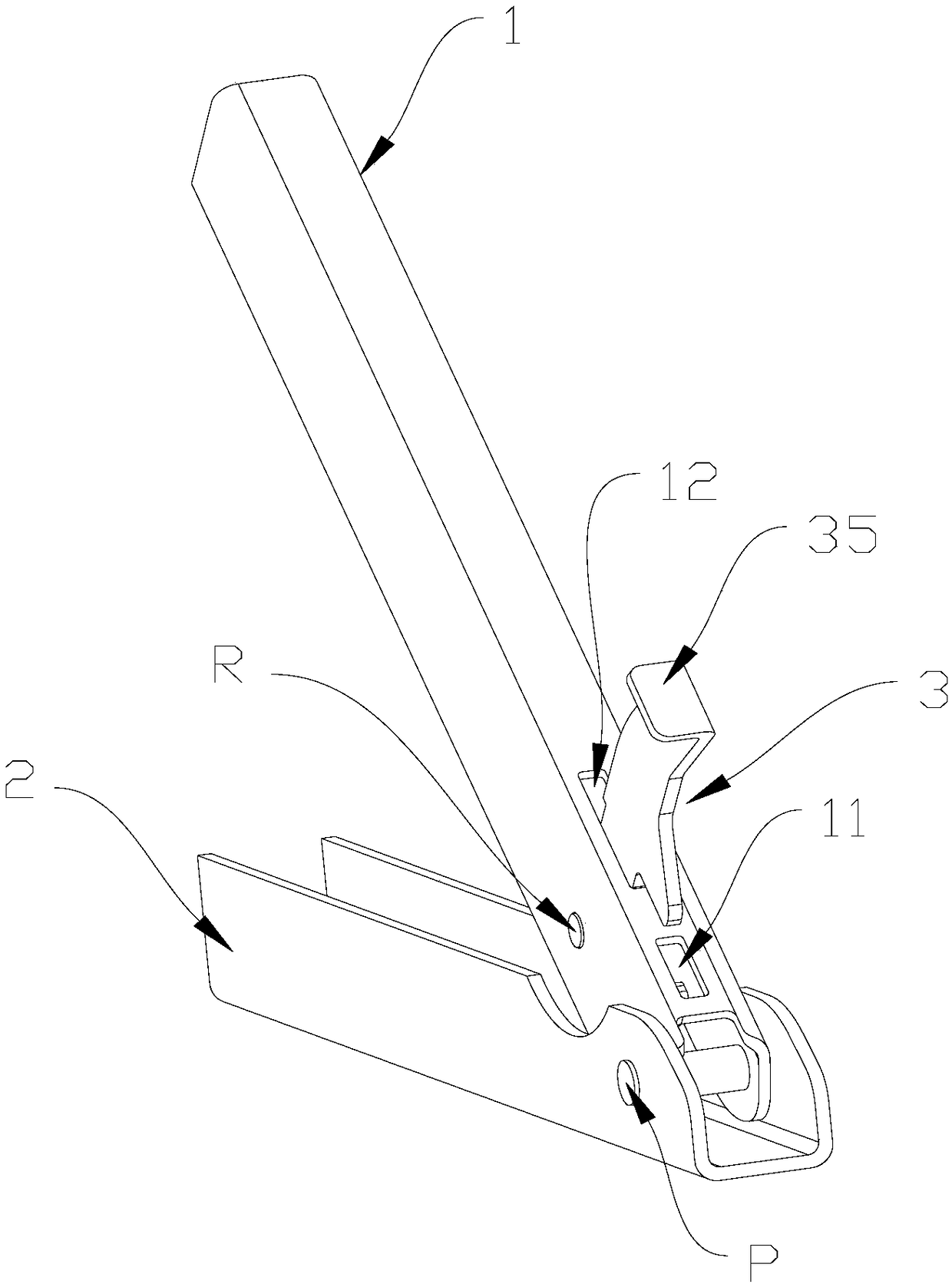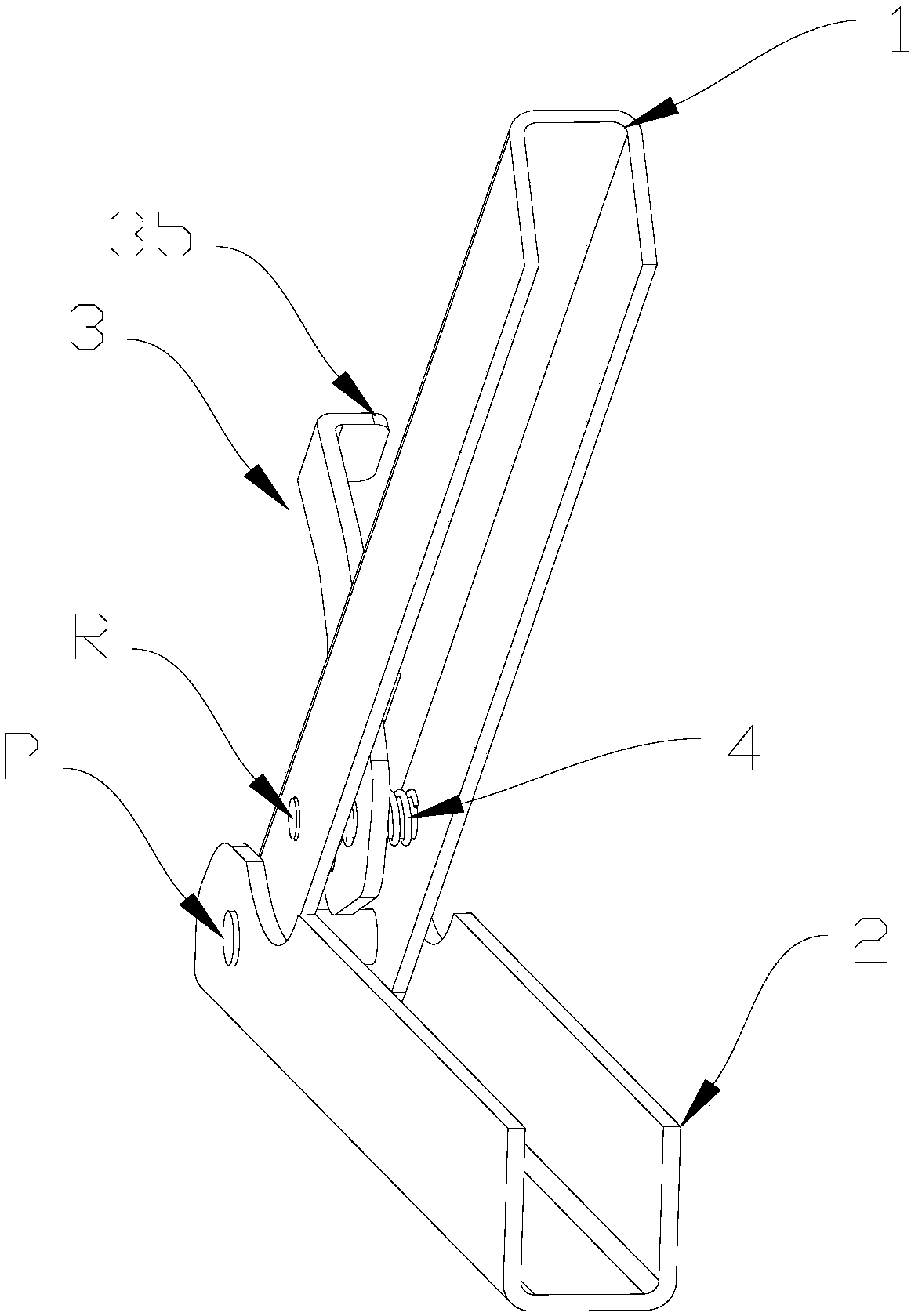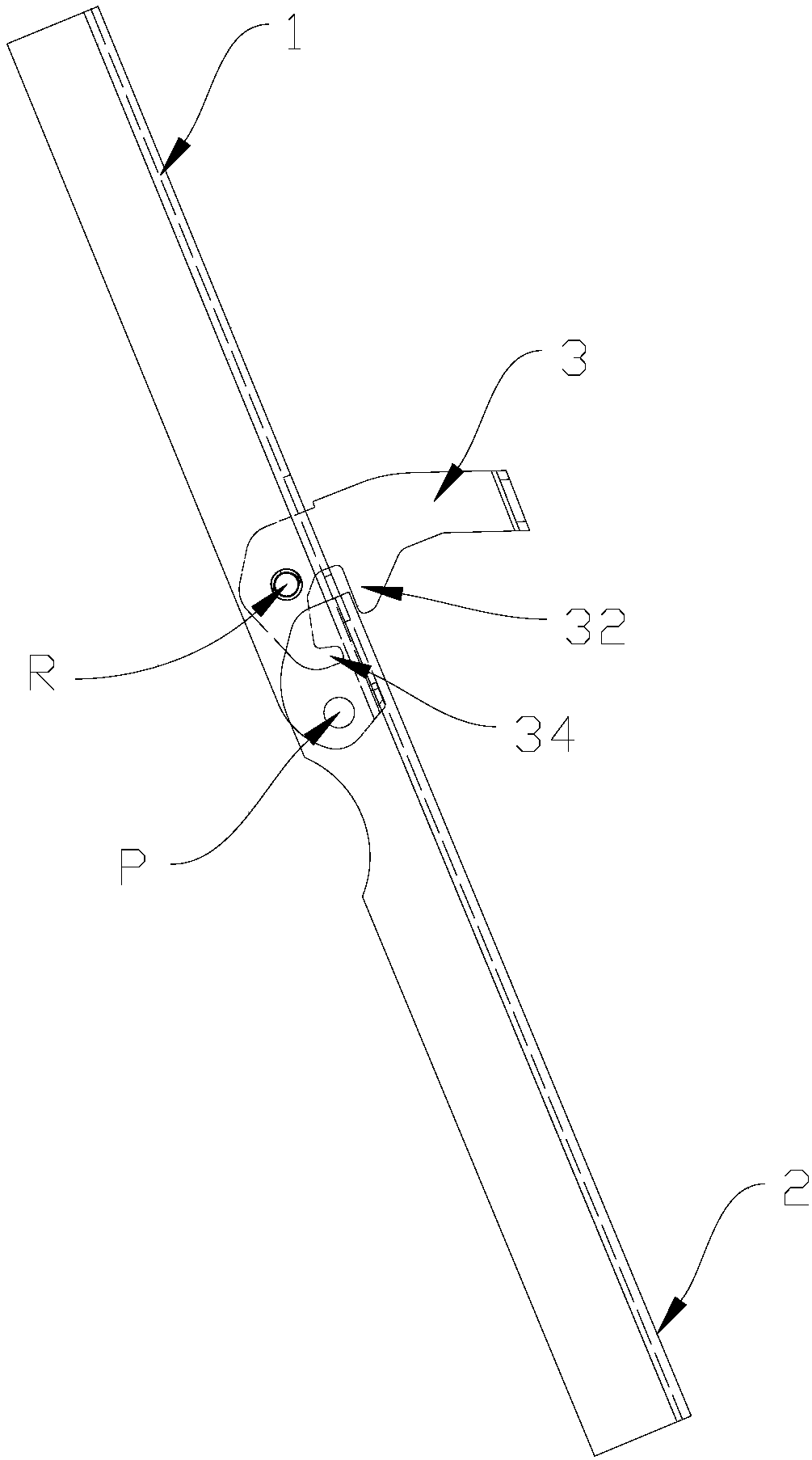Cab brace rod and vehicle
A cab and strut technology, applied in the field of vehicles, can solve the problems of inconvenient release of self-locking and inconvenient operation
- Summary
- Abstract
- Description
- Claims
- Application Information
AI Technical Summary
Problems solved by technology
Method used
Image
Examples
Embodiment Construction
[0035] Specific embodiments of the present disclosure will be described in detail below in conjunction with the accompanying drawings. It should be understood that the specific embodiments described here are only used to illustrate and explain the present disclosure, and are not intended to limit the present disclosure.
[0036] Such as Figure 1 to Figure 7 As shown, the present disclosure provides a cab strut, which includes a first strut 1 and a second strut 2 hinged to each other, and a locking handle 3 . The locking handle 3 is hinged on the first strut 1, and is used to lock the first strut 1 and the second strut 2 in a straight line, and the locking handle 3 has an unlocking portion 34. When the locking handle 3 moves along When the unlocking direction is turned, the unlocking portion 34 can abut against the second strut 2 so that the second strut 2 can rotate relative to the first strut 1 .
[0037] In this disclosure, such as Image 6 As shown, since the locking ha...
PUM
 Login to View More
Login to View More Abstract
Description
Claims
Application Information
 Login to View More
Login to View More - R&D
- Intellectual Property
- Life Sciences
- Materials
- Tech Scout
- Unparalleled Data Quality
- Higher Quality Content
- 60% Fewer Hallucinations
Browse by: Latest US Patents, China's latest patents, Technical Efficacy Thesaurus, Application Domain, Technology Topic, Popular Technical Reports.
© 2025 PatSnap. All rights reserved.Legal|Privacy policy|Modern Slavery Act Transparency Statement|Sitemap|About US| Contact US: help@patsnap.com



